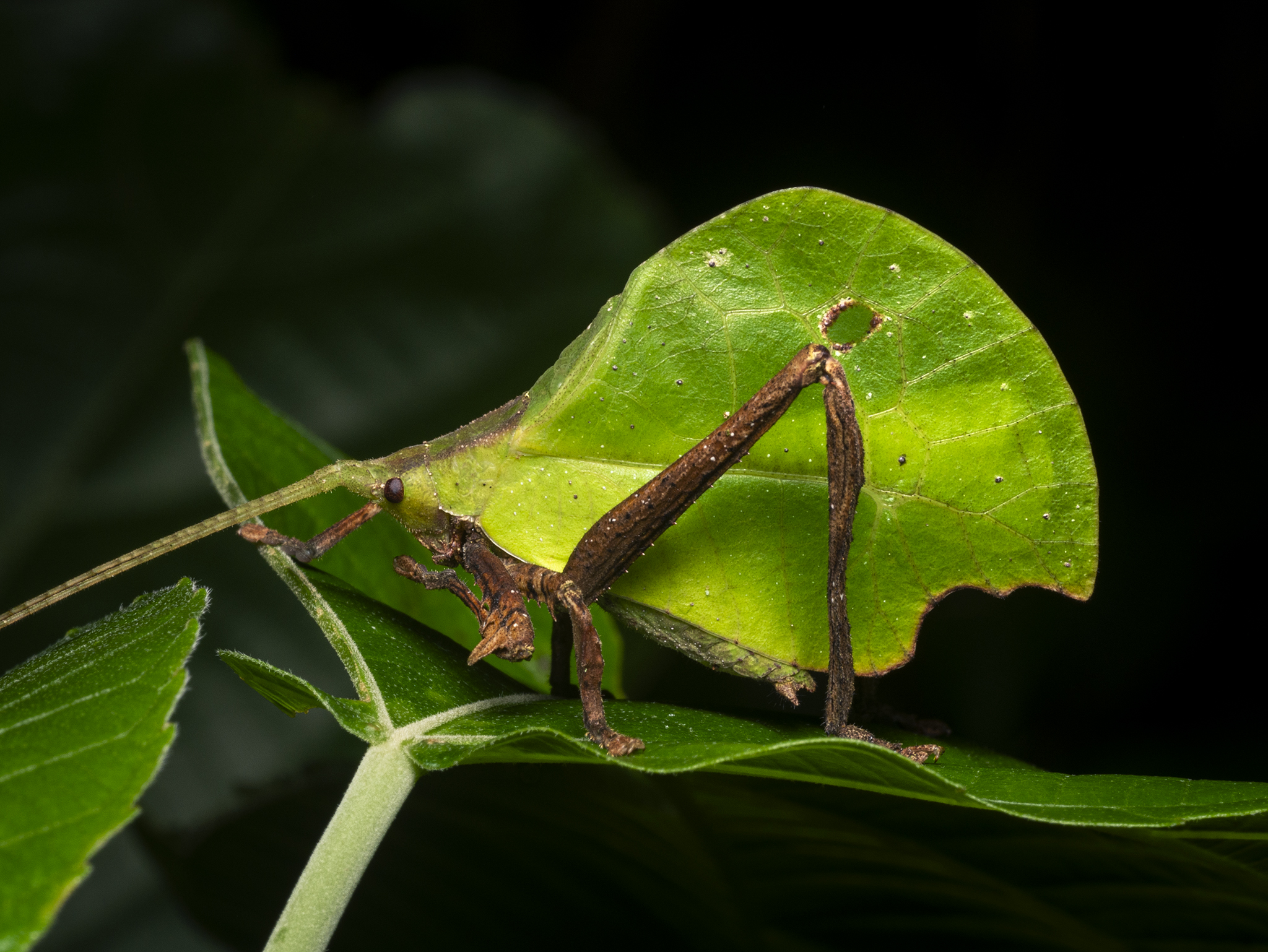There’s leaf-mimicry, and then there’s this…
All over the world, you’ll find spectacular Katydids that have evolved to look like leaves. There’s even a name for them – Leaf Katydids (because scientists are highly creative when it comes to naming stuff).
However, like most aspects of nature, things get taken up a notch when you arrive in the Amazon. Here, you’ll find the Neotropical Leaf Katydids – and they are truly spectacular. Neotropical Leaf Katydids look at regular Leaf Katydids and are like, “You call that a leaf? This is a leaf.”
Take the katydid pictured here for example – Typophyllum mortuifolium – which has evolved to look like a partially-eaten leaf. Just to be clear, this katydid is in no way damaged or injured – this is exactly what it’s supposed to look like. The small hole up the top? The apparent chunk taken out of bottom corner? It’s all part of the design.
But ‘design’ is, of course, the wrong word. Over millennia, random genetic mutations resulted in katydids that looked more or less like leaves, and the ones that looked more like leaves survived just a little bit longer without getting eaten by predators.
If your leaf-mimicry is too good, however, you risk being accidentally consumed by some kind of leaf-munching herbivore. So in an evolutionary sense, it pays to look like a slightly older, less delicious leaf – perhaps even one that has already been nibbled on. After all, if you were choosing a piece of lettuce for your salad, would you pick the fresh, green one, or the one that’s going brown around the edges, and that someone else has already taken a bite out of?
–
Neotropical Leaf Katydid (Typophyllum mortuifolium), Manu Biological Station, Peru


